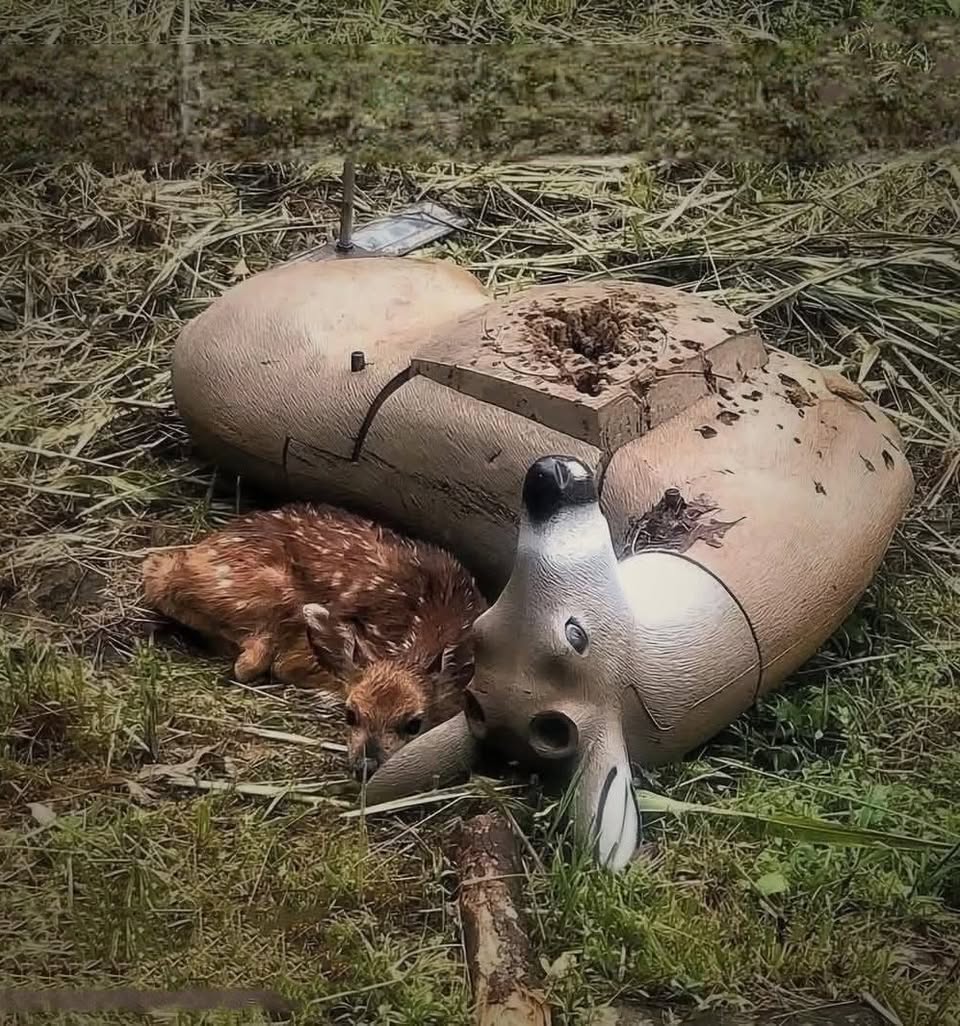Sometimes a single picture can say more than a thousand words, piercing through the everyday noise and reminding us of the delicate threads that bind all living things. Recently, an emotionally charged image has taken the internet by storm—a fawn, barely more than a few weeks old, curled up beside a fake deer used as a target for shooting practice.
At first glance, the photograph might seem confusing. Why would a wild fawn seek comfort near a rigid, unmoving figure in an open field? But a closer look reveals the fawn's vulnerability. It has nuzzled up to the decoy, seeking perhaps security or warmth, blissfully unaware that its chosen companion is merely an object designed to help humans perfect the art of killing.
A Symbol of Innocence and Irony
This image, devastating in its innocence, prompts profound reflection. For the fawn, the decoy surely represents safety; after all, its mother or herd would offer the only solace it knows. But for us, the viewers, the scene is weighted with symbolism—the soft lines of a living baby animal against the cold, lifeless shape meant for violent sport. The contrast is as stark as it is thought-provoking.
Nature is filled with such ironies, and this photograph is an unsettling example of how human interventions, even seemingly harmless ones like hunting practice, can ripple through wild ecosystems. It's a poignant reminder that our presence—and our habits—can disrupt the delicate rhythms of animal life in unseen ways. The fawn's confusion becomes a metaphor for how human activity often centers around dominance rather than coexistence.
A Call for Reflection
Many who saw the image were moved to tears, describing it as both beautiful and heartbreaking. As it spread across social media and various wildlife forums, people found themselves compelled to consider the ethical dimensions of hunting, land management, and our broader relationship with animals. The sight of innocence curled up beside a symbol of mortality is almost too much to bear, forcing us to ask: Have we drifted so far from nature that we no longer recognize the profound cost of our actions?
The story behind this photograph is not just about a single animal, but about the wider context of how wild animals navigate a world increasingly shaped by humans. For countless fawns born each spring, the threats of hunters, roads, and habitat loss are daily realities. Yet their innocence—and their hope—persist.
The Lasting Impact
Perhaps this fawn will wander off unharmed, eventually finding its real kin. Or perhaps not. But the image will remain with us, urging us to respect the vulnerable and question the habits and technologies we so casually accept. True stewardship of the wild begins with empathy, and one profoundly moving photo has brought that lesson to the forefront.

Let this heartbreaking picture remind us: every action we take in nature leaves a mark, and every life—no matter how small—holds immense value.



